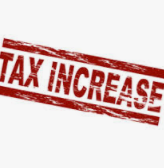
Most bankruptcy attorneys have a basic level of understanding of the how exemptions work. At a very broad level, a claim of exemptions removes property of a consumer debtor (note that business debtors are not afforded exemptions) from the bankruptcy estate and thereby serves as a foundation for the “fresh start” that bankruptcy is designed to provide.
But I suspect that even seasoned bankruptcy attorneys – including myself – lack a detailed understanding of many of the nuances of the mechanics of exemptions unless they’ve been faced with issues related to the claiming of exemptions. A recent case has prompted a “back to the basics” look at the mechanics of exemptions.
When a debtor files for bankruptcy, all of the Debtor’s property becomes property of the bankruptcy estate pursuant to §541(a)(1) and (a)(2). The estate even includes the property that the debtor intends to claim as exempt under 522. See Taylor v. Freeland & Kronz, 503 U.S. 638 (1992). As explained below, the debtor’s property may then be removed from the estate via the §522 exemption procedure.
Under 522, a Debtor may exempt property by filing a list of property that the Debtor claims is exempt under §522(b). At this time, the property is still considered property of the estate. The property may then only become exempt if the requirements of §522(l) are met. Section 522(l) states:
[t]he debtor shall file a list of property that the debtor claims as exempt under subsection (b) of this section . . . Unless a party in interest objects, the property claimed as exempt on such list is exempt.
Therefore, the property’s exempt status is conditioned on a lack of objection by a party in interest. While §522(l) conditions exemptions on a lack of objection, the section sets no deadline for when a party must object. This deadline is supplied by Fed. R. Bankr. P. 4003(b), which states in relevant part
A party in interest may file an objection to the list of property claimed as exempt only within 30 days after the meeting of creditors held under § 341(a) is concluded or within 30 days after any amendment to the list or supplemental schedules is filed, whichever is later.
Rule 4003(b) gives the trustee and creditors 30 days from the conclusion of the initial creditors’ meeting to object. By negative implication, Rule 4003 indicates that creditors may not object after 30 days “unless, within such period, further time is granted by the court.” Therefore, if the objection period expires without extension, then property claimed as exempt is exempt. Taylor, 503 U.S. at 642.
Once the property has been made exempt, the property exits the estate and vests in the Debtor. See In re Bell, 225 F.3d 203 (2ndCir. 2000).
The issue that brought these issues to light was a simple motion for relief from stay filed by a mortgage creditor in an individual bankruptcy case. That case had initially been filed as a chapter 11 case, but was subsequently converted to chapter 7. After conversion, the mortgage creditor filed a motion for relief from stay based on the debtor’s failure to make regular mortgage payments for many months, including the period during which the case was in chapter 11. As a result of ongoning settlement discussions—which led to numerous continuances—the motion for relief did not come to a hearing for several months. When the matter was not resolved, the parties proceeded to a hearing on the motion. After hearing the evidence and arguments, the Court determined that the motion for relief was unnecessary based on the court’s reasoning that, since the creditor meeting had concluded more than 30 days prior to the hearing, the property at issue—the debtor’s homestead, which had been claimed as exempt—was no longer property of the estate, and therefore the stay no longer applied to such property. The court therefore held that the motion was moot.
The scenario raises a couple of issues:
- First, was the Court correct? Specifically, is it accurate that the stay no longer applies to property that has been exempted and as to which the objection period for exemptions has expired?
- As a broader analysis, what effect, if any, does a conversion of a case from one chapter to another have on this analysis?
Applicability of Stay to Exempted Property
The Court’s ruling that the automatic stay no longer applies to exempted property is likely grounded in 11 U.S.C. §362(c)(1), which states that:
The stay of an act against property of the estate under subsection (a) of this section continues until such property is no longer property of the estate;
As we saw above, once exempted, property vests in the debtor and is thereby no longer property of the estate. But is that the end of the story. Said another way, does the fact that property is no longer property of the bankruptcy estate mean that the automatic stay does not apply at all? The provision above only tells us about the stay as it relates to property of the estate. It does not explicitly address issue of the applicability of the automatic stay to property that is merely property of the debtor. A negative implication might be argued, but is that correct?
A closer look at §362(a) reveals a counter point. Section 362(a) is the broad provision that imposes the stay as to a broad range of acts against property. In most cases, the language of the various provisions of §362(a) reference “property of the estate.” See 11 U.S.C. §362(a)(2), (3), (4). However, §362(a)(5) states that the automatic stay operates as a stay to all entities of any act to create, perfect, or enforce against the “property of the debtor.” The question then becomes whether the altered language alters the analysis above. Stated simply, does the automatic stay continue to apply to property that has been exempted and thereby removed from the bankruptcy estate?
Although specific reference to §362(a)(5) has not been found in cases related to a motion for relief from stay, at least one case has addressed the issue in the context of the abandonment of property of the estate. In In re Gasprom, 500 B.R. 598 (9th Cir. 2013), a Bankruptcy Appellate Panel of the Ninth Circuit addressed the effect of an abandonment order on the existence of the automatic stay. It found the following:
By operation of law, the August 1, 2012 Abandonment Order only terminated one aspect of the stay, the aspect protecting the Gas Station as “property of the estate.” Upon abandonment, the Gas Station no longer was property of the estate; title to the Gas Station reverted to Gasprom. See Catalano v. Comm’r, 279 F.3d 682, 685 (9th Cir.2002). Hence, the aspect of the stay protecting estate property no longerapplied. See § 362(c) (1). But the abandonment did not by operation of law terminate the aspect of the stay arising from § 362(a)(5), which protects “property of the debtor.” Absent a ruling by the court granting relief from stay under § 362(d) so as to permit foreclosure to occur, 362(a)(5) continued to protect the Gas Station from foreclosure, at least until the bankruptcy court closed Gasprom’s bankruptcy case on August 16, 2012. See § 362(c)(2).
Therefore, Courts do in fact recognize the distinction in language provided by § 362(a)(5) addressing “property of the debtor” as opposed to “property of the estate.” And based on the analysis in Gasprom, we believe the correct answer is that property removed from the bankruptcy estate by operation of the exemption scheme continues to be protected by the automatic stay under § 362(a)(5).
Effect of Conversion
A conversion of a case – e.g., from chapter 13 to 7 or from 11 to 7 – adds a wrinkle to the analysis above. As noted above, Fed. R. Bankr. P. 4003(b) provides that parties in interest have 30 days from the date of “the meeting of creditors held under § 341(a).” The question arises – which meeting of creditors? If the case initiated as one under either chapter 13 or chapter 11, then a meeting of creditors was conducted in conjunction with those initial filings. By operation of § 348 of the Bankruptcy Code, conversion from one chapter to another constitutes an “order for relief,” which triggers a new meeting of creditors under §341.
In a case out of the Second Circuit, In re Bell, 225 F.3d 203 (2nd Cir. 2000), the Court found that, when property had been exempted by an individual in their chapter 11 case—and thereby removed from the estate—a subsequent conversion to chapter 7 did not bring that property back into the estate such that parties in interest could contest a claim of exemption.
However, in 2010, Bankruptcy Rule 1019 was amended and now provides in relevant part:
A new time period for filing an objection to a claim of exemptions shall commence under Rule 4003(b) after conversion of a case to chapter 7 unless:
(i) The case was converted to chapter 7 more than one year after the entry of the first order confirming a plan under Chapter 11, 12, or 13; or
(ii) The case was previously pending in chapter 7 and the time to object to a claimed exemption had expired in the original chapter 7 case.
Although not reflected in Bankruptcy Rule 4003 itself, this change implicitly overrules the result in Bell. Therefore, although property may have been previously exempted by way of a lack of objection to exemptions, the amended rule essentially allows parties in interest a “second bite at the apple” to object to the debtor’s claimed exemptions when a case originally filed under another chapter of bankruptcy is converted to Chapter 7.
Application
An individual debtor’s claim of exemptions is subject to a variety of rules that govern both the timing of their claim as well as the timing of objection to such claim. The automatic stay as applied to property exempted, and thereby removed from the bankruptcy case, does not automatically vanish upon exemption of such property. Creditors should be aware of the ongoing protection provided to property of the debtor, as should Debtors seeking to continue to protect such property. Finally, debtors and creditors alike should be aware of the opportunity to revisit a claim of exemptions upon a conversion of a case to Chapter 7.
Have a question on bankruptcy’s? Contact Gregory Mitchell, Freeman Law, Texas.


















Recent Comments